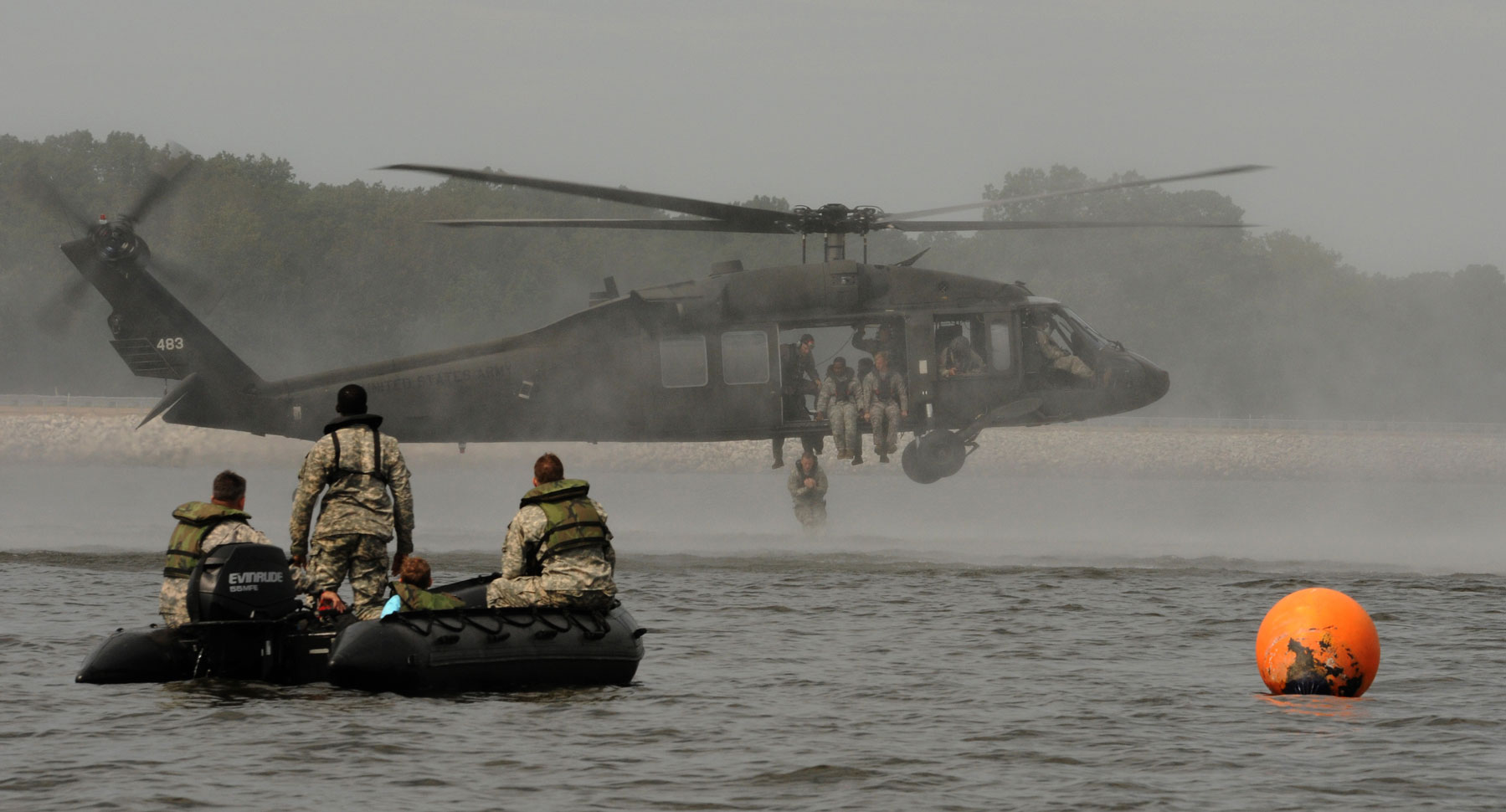Special Forces soldiers are grouped into 12-man Operational Detachment Alpha teams or ODA’s. In this manner they are organized for unconventional warfare, the only unit in the military specifically designed to fight the type of counter-insurgency operations that America finds itself in today. Because of their task organization and inherent decentralization, each ODA has it’s own attitude, it’s own culture, and it’s own way of getting things done. While each team has it’s own SOP’s in place, don’t expect a high level of standardization here. ODA’s have to remain flexible and versatile, shifting gears from one deployment to the next, one mission to the next, and adapting to each new situation as it presents itself.
Because of this, ODA’s can vary wildly in what day to day life is like. If you are on a Dive Team you will be spending a lot of time in the pool. If you are on a HALO Team you might be spending a lot of time in Dunkin’ Donuts eating “body stabilization pills.” Okay, that last part is a joke…sort of. You might end up on an ODA full of Crossfit cult members, or a team that likes to roll out on their Harleys during the weekend. Some teams like to go out and get blasted at the bar during downtime. Other teams have family get togethers and barbecues. Still, others will have some combination of the above. Like I said, each team has it’s own personality. As a member of a small 12-man team, you will experience a unique type of camaraderie.
Training is also decentralized. When I was the senior 18B (Weapons Sergeant) on my team, I was responsible for training my team in all manners of weapons and tactics. The Team Sergeant gets the final say of course, but as a team we decide what we need to train on and when. This training can be conducted on your base or off site at any number of vendor schools that Special Forces soldiers get to attend. From shooting, to off-road driving, to HALO train-ups, there is a wide range of tasks to stay current on. One of the over looked but more useful training events is working with and training conventional units, especially new, inexperienced soldiers. First and foremost, Green Beret’s are trainers, and training soldiers is a skill like any other, it needs to be honed and refined.
Deployments:
Truth be told, these types of Direct Action missions are one small part of the Special Forces mission. Direct Action gets all the air time on television and in movies because it plays well for the camera. However, the primary mission of Special Forces is Foreign Internal Defense and Unconventional Warfare, of which, Direct Action is but one component. Foreign Internal Defense, or FID, is when an ODA goes to a friendly nation to train it’s military to resist the terrorism or even to help the host nation prevent the proliferation of Weapons of Mass Destruction. Unconventional Warfare can generally be thought of as the opposite of FID. In a UW campaign, an ODA will link up with guerrilla fighters and help them in toppling oppressive regimes. Perhaps the best example of this is when Special Forces teams infiltrated into Northern Afghanistan, linked up with the Northern Alliance fighters and swept the Taliban out of Mazar-i-Shareef, Kabul, Kandahar, and beyond.
On a yearly basis, you can bet that Special Forces teams will be deployed to over a hundred countries around the world. While SF soldiers are engaged in direct combat in places like Iraq and Afghanistan, it is more likely that you will find them training the soldiers of friendly and allied countries from Georgia to Jordan.
Special Forces men work in the gray; they are influencers and enablers who build relationships with their host nation counterparts years before wars begin. Rather than chase glory, they are often content to hang in the background and let the indigenous soldiers they trained take the credit. This is really the bread and butter of Special Forces, but these types of missions don’t make the headlines. They are subtle, and difficult to explain in the soundbytes that are found on TV news channels.
As a Special Forces soldier, you could find yourself hovering in an aging Huey helicopter over a massive jungle battle in the Philippines, you could be sitting in a meeting with the Iraqi Prime Minister, you could be leading Afghani commandos on strike operations, you could be training Lebanese soldiers on marksmanship drills, you could be tagging along with Colombian troops as they target drug labs deep in the jungle, you might even find yourself cruising around the mountains with Nepalese Rangers. Frankly, the variety of missions you find Special Forces soldiers conducting is hard to sum up in a few paragraphs.
In reality, there is no training and no field manual that can fully prepare you for these types of missions. For instance, I had two Iraqi commanders I worked with screaming at each other one night. They were distantly related and now they were in some kind of inter-familial feud. We were in a room full of other Iraqis staring at their commanders about to go to blows. My interpreter leaned toward me and said, “They are not carrying guns, are they?” Of course, they were all carrying guns. These are the types of situations that Special Forces soldiers have to know how to handle and defuse. I’ve found that in this type of work there are no 100% right answers.
As the battlefield becomes even more complex and conflicts are increasingly waged by non-state actors such as terrorist organizations, you can bet that the only military unit organized for unconventional warfare, Special Forces, will be at the tip of the spear.
